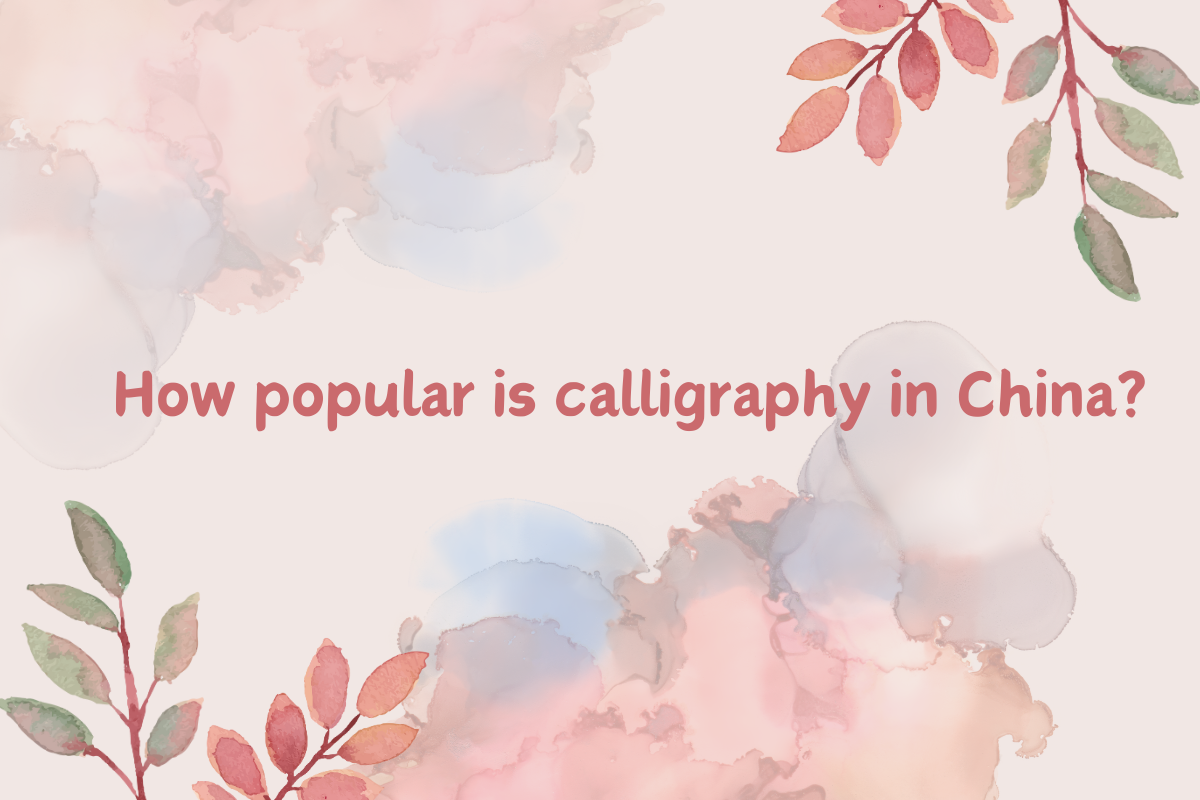How Popular is Calligraphy in China
Calligraphy holds a revered status in Chinese culture, embodying centuries of tradition and artistic expression. But just how popular is calligraphy in modern-day China? In this blog post, we delve into the widespread appeal and enduring significance of calligraphy in China's contemporary society.

Historical Significance
Calligraphy has been an integral part of Chinese culture for thousands of years, revered for its beauty, elegance, and cultural significance. From ancient scrolls to modern artworks, calligraphy has played a central role in conveying the essence of Chinese thought, literature, and philosophy 哲学 (zhé xué).
哲学 (zhé xué), noun, philosophy
Examples:
- His major is philosophy.
他的专业是哲学。
Tā de zhuānyè shì zhéxué. - Philosophy explores fundamental questions about existence and reality.
哲学探讨存在和现实的基本问题。
Zhéxué tàntǎo cúnzài hé xiànshí de jīběn wèntí.

Educational Emphasis
In China, calligraphy is not only regarded as an art form but also as a fundamental aspect of education. Starting from a young age, Chinese students are introduced to calligraphy as part of their curriculum, learning to appreciate and master the intricate brushstrokes and characters. Many schools and universities have calligraphy clubs and classes, reflecting the continued 持续的 (chí xù de) importance placed on this traditional art form.
持续的 (chí xù de), adj, continued
Examples:
- The continued rain caused flooding in the area.
持续的雨导致该地区发生了洪水。
chíxù de yǔ dǎozhì gāi dìqū fāshēngle hóngshuǐ. - We appreciate your continued support for our project.
我们感谢您对我们项目的持续支持。
wǒmen gǎnxiè nín duì wǒmen xiàngmù de chíxù zhīchí.
Cultural Heritage
Beyond its educational value, calligraphy is deeply intertwined with China's cultural heritage. It is often practiced as a form of meditation and self-expression, with practitioners dedicating hours to perfecting their craft. Calligraphy exhibitions, competitions, and festivals are held throughout the country, attracting enthusiasts and experts alike, further enriching China's cultural landscape.
Key Sentences:
- Calligraphy is very popular in China.
书法在中国十分流行。
Shūfǎ zài zhōngguó shífēn liúxíng. - Contemporary young people still enjoy learning calligraphy.
当代年轻人还是很喜欢学习书法。
Dāngdài niánqīng rén háishì hěn xǐhuān xuéxí shūfǎ. - Calligraphy is still very popular in modern times.
书法在现代还是很受欢迎。
Shūfǎ zài xiàndài háishì hěn shòu huānyíng.